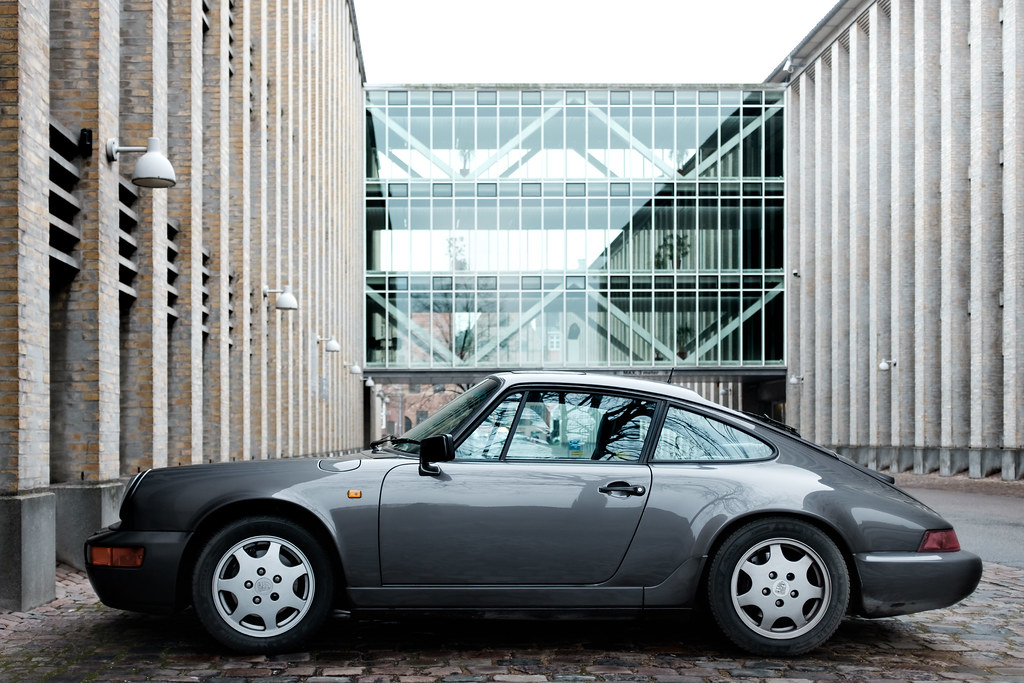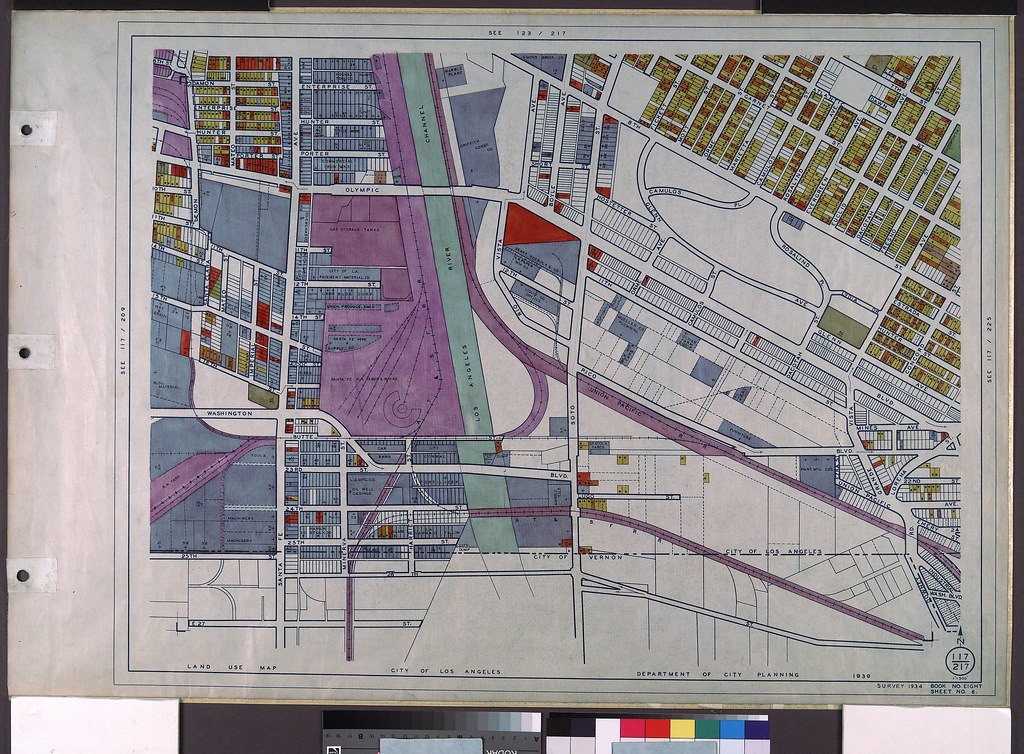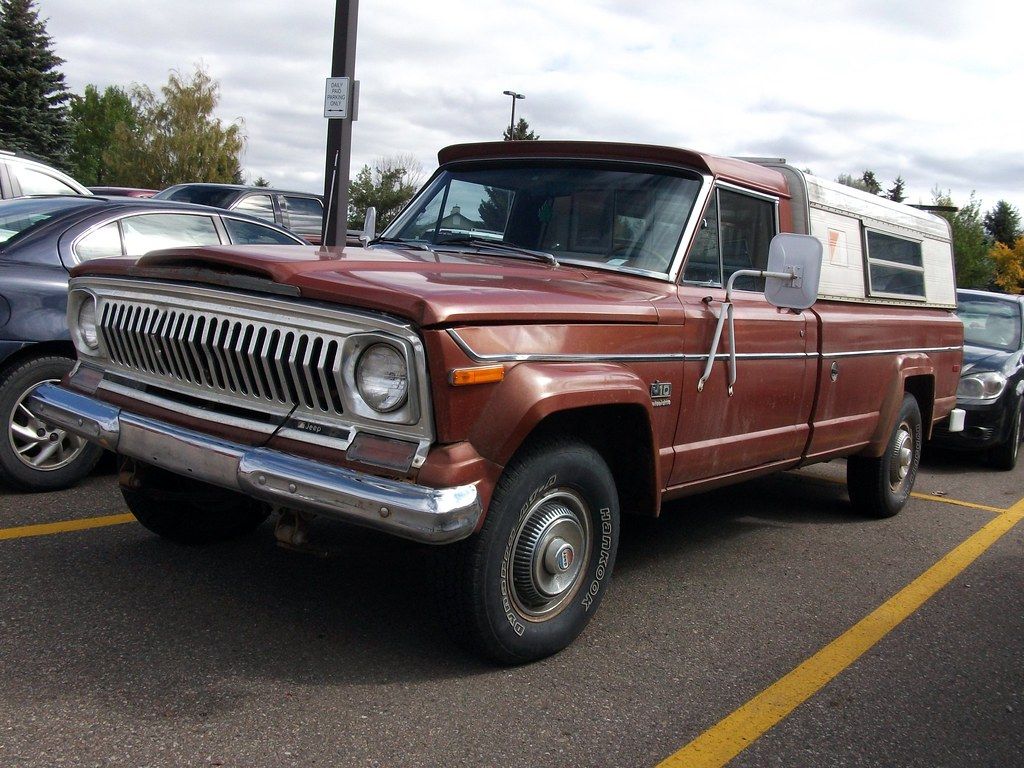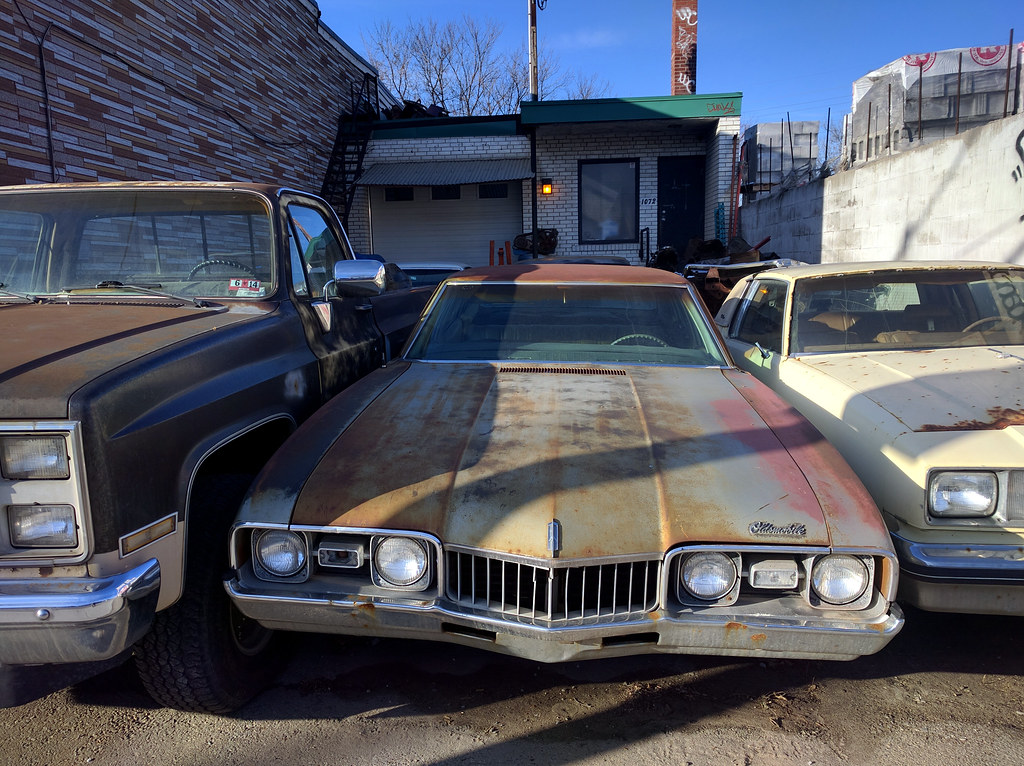
Hey gearheads and pop culture fanatics, gather ’round! There’s just something undeniably captivating about seeing our favorite stars cruising in some seriously sweet rides. The relationship between celebrities and automobiles has always been symbiotic, creating cultural touchstones that transcend both the entertainment and automotive worlds in the most exciting ways imaginable. We’re talking about cars that aren’t just transportation; they’re extensions of personality, rebellion, success, and even tragedy.
When a high-profile personality becomes associated with a particular vehicle, something truly magical happens. The car’s identity becomes forever intertwined with its famous owner, often raising an otherwise ordinary model to legendary status. These automotive celebrity pairings create powerful cultural associations that can transform market demand, collector values, and even public perception, making them much more than just a set of wheels and an engine.
Sometimes, a celebrity’s car becomes so iconic that it’s impossible to think of the vehicle without picturing its famous driver, whether through movie roles, public appearances, or sometimes, tragic circumstances. We’re about to take an epic ride through some of the most unforgettable celebrity-car connections that define American cool, from affordable classics to bespoke luxury creations. These vehicles demonstrate how star power can imbue metal, rubber, and glass with cultural significance that endures for generations.

1. **James Dean’s Porsche 550 Spyder**
Few automotive-celebrity pairings have achieved the mythical status of James Dean and his silver Porsche 550 Spyder. This relationship was immortalized not just in photographs and film history, but by its tragic conclusion on a California highway that forever linked man and machine in cultural memory. It’s a story that still sends shivers down the spine!
Dean, fresh off completing filming of “Giant,” purchased the lightweight aluminum-bodied sports car in September 1955. The 550 Spyder represented the pinnacle of Porsche’s racing technology at the time. It was a purpose-built competition vehicle, weighing just 1,410 pounds and powered by a four-cylinder boxer engine producing 110 horsepower, making it a true marvel for its era.
Dean’s example was one of only 90 built, already making it exceptionally rare before its association with the actor. What truly transformed this particular 550 Spyder into a legend was Dean’s decision to personalize it. He commissioned pinstriper Dean Jeffries to paint “Little Bastard” on the rear deck and the number 130 on its doors, hood, and engine cover. These customizations made the car instantly recognizable and perfectly reflected Dean’s rebellious persona that had so fascinated American youth.
On September 30, 1955, while driving to a racing event in Salinas, Dean tragically collided with a Ford Tudor. This happened at the intersection of California Highways 41 and 466. He died almost instantly, at just 24 years old. In that devastating moment, both Dean and his Porsche were transformed from mere actors and automobiles into enduring symbols of youth, rebellion, and mortality – a legacy that continues to resonate even today.
The wreckage of “Little Bastard” subsequently developed its own mystique. After the crash, parts of the car were sold to other racers, and several accidents involving these components fueled rumors of a “curse.” The main chassis reportedly disappeared while being transported to a safety exhibit in 1960, creating an enduring mystery that has captivated fans and collectors for decades. The cultural impact of Dean’s 550 Spyder extends far beyond the automotive world. It fundamentally altered Porsche’s image in America, transforming the brand from an obscure European sports car manufacturer into a symbol of speed, danger, and cool. Even today, silver Porsche sports cars carry an unmistakable connection to Dean’s legacy, demonstrating how thoroughly a celebrity can change a vehicle’s cultural meaning through association.
Car Model Information: 2018 Chevrolet Corvette Grand Sport
Manufacturer: Porsche
Production: 1953–1956,90 produced
Designer: Erwin Komenda
Class: Sports car
Assembly: Stuttgart
Layout: RMR layout
Engine: flat four engine
Transmission: Manual transmission
Wheelbase: 2,100 mm (82.7 in)
Length: 3,600 mm (141.7 in)
Width: 1,610 mm (63.4 in)
Height: 980 mm (38.6 in)
Weight: approximately 550 kg (1,212 lbs)
Successor: Porsche 718
BodyStyle: coupé
Categories: 1957 Formula One season cars, 1958 Formula One season cars, 24 Hours of Le Mans race cars, All articles needing additional references, Articles needing additional references from July 2007
Summary: The Porsche 550 is a racing sports car produced by Porsche from 1953 until 1956. In that time only 90 Porsche 550s were produced, and they quickly established dominance in the 1.1- and 1.5- liter classes. The Porsche 550 is a mid-engine car with an air-cooled four-cylinder engine, following the precedent of the 1948 Porsche 356/1 prototype designed by Ferry Porsche. The mid-engine racing design was further developed with Porsche’s 718 model; its advantages led to it becoming the dominant design for top-level racing cars by the mid-1960s.
The Porsche 550 has a solid racing history; it won the Nürburgring Eifel Race in May 1953, the first race it entered. The 550 Spyder usually finished in the top three in its class. Each Spyder was designed and customized to be raced.
A 1958 Porsche 550A Spyder sold at auction in 2018 by Bonhams for $5,170,000 (£4,115,763); it was the highest price for a 550 at auction.
Get more information about: Porsche 550
Buying a high-performing used car >>>
Brand: Porsche Model: 550 Spyder
Price: $59,896 Mileage: 26,662 mi.
Read more about: From Getaway Cars to Tragic Endings: Unpacking 12 of History’s Most Infamous Automotive Disasters

2. **Steve McQueen’s Ford Mustang GT Fastback**
When Steve McQueen tore through the streets of San Francisco in a Highland Green 1968 Ford Mustang GT 390 Fastback during the legendary chase scene in “Bullitt,” he forever altered the destiny of an already popular American car. He raised it to mythical status and created perhaps the most influential automotive product placement in cinema history. Talk about a star turn!
The Mustang chosen for the film was deliberately understated. It featured no racing stripes, minimal badging, and was fitted with a subdued dark green paint job that allowed it to blend into urban environments. This subtle approach reflected McQueen’s philosophy toward style: confident without being ostentatious, a true reflection of his cool demeanor. Two identical cars were prepared for filming, with modified suspension systems to handle the punishing jumps and turns that would make the chase sequence so incredibly memorable.
The ten-minute chase scene through San Francisco was no small feat, requiring three weeks to film. McQueen himself did much of his stunt driving at speeds reportedly reaching an astounding 110 mph! What made the sequence truly revolutionary wasn’t just the speed, but director Peter Yates’ decision to film it from the driver’s perspective, creating an immersive experience that made audiences feel as though they were behind the wheel alongside McQueen.
Beyond its cinematic impact, McQueen’s Mustang fundamentally changed Ford’s marketing approach. Recognizing the cultural power of the association, Ford has released multiple “Bullitt” edition Mustangs over the decades, each paying homage to the original with Highland Green paint, minimal badging, and performance upgrades. These special editions consistently sell out quickly, demonstrating the enduring power of the McQueen connection. It’s a testament to timeless cool!
The film car itself became something of a holy grail for collectors. After filming, one car was sent to a salvage yard (later discovered and restored), while the hero vehicle was sold to a private buyer. It disappeared from public view for decades until 2018, when the McQueen filming Mustang resurfaced and sold at auction for a staggering $3.74 million – the most expensive Mustang ever sold, and undeniable proof of the astronomical value added by the McQueen provenance. The cultural significance of this particular Mustang extends far beyond its mechanical specifications or performance capabilities. It represents a perfect alignment of actor, character, and vehicle – the laconic, no-nonsense Detective Frank Bullitt paired with an equally straightforward, purposeful American muscle car. Together, they created an automotive icon that continues to influence design, marketing, and car culture more than five decades later.
Car Model Information: 2018 Chevrolet Corvette Grand Sport
Name: Ford Mustang
Caption: 2018 Ford Mustang GT 5.0
Aka: Ford T5 (Germany)
Manufacturer: Ford Motor Company
Production: March 1964 – present
ModelYears: 1965–present
Class: Unbulleted list
BodyStyle: Unbulleted list
Layout: Front-engine, rear-wheel-drive layout
Categories: 1970s cars, 1980s cars, 1990s cars, 2+2 coupés, 2000s cars
Summary: The Ford Mustang is an American automobile manufactured and marketed by Ford since 1964, as Ford’s longest nameplate in continuous production. Currently in its seventh generation, it is the fifth-best selling Ford car nameplate. The namesake of the “pony car” automobile segment, the Mustang was developed as a highly styled line of sporty coupes and convertibles derived from existing model lines, initially distinguished by its pronounced “long hood, short deck” proportions.
Originally predicted to sell 100,000 vehicles yearly, the 1965 Mustang became the most successful vehicle launch since the 1927 Model A. Introduced on April 17, 1964 (16 days after the Plymouth Barracuda), over 400,000 units were sold in its first year; the one-millionth Mustang was sold within two years of its launch. In August 2018, Ford produced the 10-millionth Mustang; matching the first 1965 Mustang, the vehicle was a 2019 Wimbledon White convertible with a V8 engine.
The success of the Mustang launch led to multiple competitors from other American manufacturers, including the Chevrolet Camaro and Pontiac Firebird (1967), AMC Javelin (1968), and Dodge Challenger (1970). It also competed with the Plymouth Barracuda, which was launched around the same time. The Mustang also had an effect on designs of coupes worldwide, leading to the marketing of the Toyota Celica and Ford Capri in the United States (the latter, by Lincoln-Mercury). The Mercury Cougar was launched in 1967 as a unique-bodied higher-trim alternative to the Mustang; during the 1970s, it included more features and was marketed as a personal luxury car.
From 1965 until 2004, the Mustang shared chassis commonality with other Ford model lines, staying rear-wheel-drive throughout its production. From 1965 to 1973, the Mustang was derived from the 1960 Ford Falcon compact. From 1974 until 1978, the Mustang (denoted Mustang II) was a longer-wheelbase version of the Ford Pinto. From 1979 until 2004, the Mustang shared its Fox platform chassis with 14 other Ford vehicles (becoming the final one to use the Fox architecture). Since 2005, the Mustang has used the D2C platform, unique to the Mustang.
Through its production, multiple nameplates have been associated with the Ford Mustang series, including GT, Mach 1, Boss 302/429, Cobra (separate from Shelby Cobra), and Bullitt, along with “5.0” fender badging (denoting 4.9 L OHV or 5.0 L DOHC V8 engines).
Get more information about: Ford Mustang
Buying a high-performing used car >>>
Brand: Ford Model: Mustang GT
Price: $59,896 Mileage: 26,662 mi.
Read more about: From Silver Screen to Street Legends: Unpacking the Most Iconic Classic Cars of Cinema History

3. **Elvis Presley’s Pink Cadillac**
Perhaps no vehicle has become more synonymous with its owner than Elvis Presley’s 1955 Cadillac Fleetwood Series 60. Its distinctive pink paint scheme transformed what would have been merely another luxury car into an enduring symbol of rock and roll flamboyance and the excesses of sudden fame and fortune. It’s truly the King’s ride!
The story of Elvis’s pink Cadillac begins with a more modest predecessor: a 1954 Cadillac that The King had famously painted pink as a gift for his beloved mother, Gladys. When that vehicle was unfortunately destroyed in a roadside fire, Elvis purchased the more luxurious 1955 Fleetwood in March of that year. Initially blue, he commissioned an auto body shop to repaint it in a custom pink hue that he called “Elvis Rose,” with a white roof to complete the striking two-tone effect. Talk about a statement!
What made this particular automotive choice so significant was how it perfectly captured Elvis’s emerging persona. In 1955, Cadillacs represented traditional American luxury and success, vehicles typically associated with established businessmen and professionals. By customizing his Cadillac in such a bold, feminine color, the young Elvis was making a deliberate statement about his willingness to challenge conventions and expectations – much like his groundbreaking music was doing to establish new musical boundaries.
The pink Cadillac quickly became a central element of the Elvis mystique. He drove it to performances across the South during his meteoric rise, frequently signing autographs while leaning against its distinctive flanks. The vehicle became so strongly associated with his image that he even referenced it in his 1955 song “Baby, Let’s Play House” with the memorable line, “You may have a pink Cadillac, but don’t you be nobody’s fool.” That’s serious brand integration!
Beyond its significance to Elvis personally, the pink Cadillac created a cultural phenomenon. It sparked a trend of automotive customization among fans and celebrities alike, with countless imitations appearing across America. The association became so strong that to this day, Mary Kay Cosmetics rewards its top sales performers with pink Cadillacs, a tradition that began way back in 1969. The original vehicle now resides at Graceland, permanently displayed as part of the Elvis Presley automobile collection, where it continues to draw thousands of visitors annually. Its cultural impact extends far beyond its function as transportation; it has appeared in countless books, documentaries, and fictional representations of Elvis’s life, becoming a shorthand visual reference for both the performer himself and the cultural revolution he helped initiate. Now that’s what we call a timeless icon!
Car Model Information: 2018 Chevrolet Corvette Grand Sport
Name: Cadillac Fleetwood Brougham
Caption: 1984 Cadillac Fleetwood Brougham d’Elegance coupe
ModelYears: 1977–1986
Manufacturer: Cadillac
Assembly: Detroit Assembly,Detroit,Michigan
Predecessor: Cadillac Sixty Special
Successor: Cadillac Brougham
Class: Full-size,luxury car
Layout: FR layout
Platform: GM C platform (RWD),GM D platform
Wheelbase: 121.5 in
Abbr: on
BodyStyle: Sedan (automobile)
Engine: 250 cuin
Transmission: Turbo-Hydramatic#Super Turbine 400 / THM400 / 3L80 / 3L80HD,Automatic transmission
Length: 221.2 in
Width: 75.3 in
Height: 57.2 in
Weight: convert
Designer: Bill Mitchell (designer)
Related: Cadillac De Ville,Buick Electra,Oldsmobile 98
Categories: 1970s cars, 1980s cars, Articles with short description, Cadillac vehicles, Commons category link from Wikidata
Summary: The Cadillac Fleetwood Brougham is a luxury car manufactured by Cadillac from 1977 through 1986. In 1987, the Fleetwood Brougham name was shortened to simply Brougham, with production continuing through 1992 with only minor updates.
Cadillac used the “Fleetwood” name as a prefix between 1934 and 1976 on several of its most expensive models, always designating an elevated level of luxury. From 1957 until 1961, Cadillac used the “Brougham” sub-designation for its exclusive four-door Eldorado models.
In 1965, the “Brougham” name was first affixed to “Fleetwood” on the Fleetwood Sixty Special as an upgraded option package, which included a vinyl roof and special “Brougham” script lettering on the sides, but it was not a separate model. In 1966, the Fleetwood Brougham was added as a separate model, accompanying the Fleetwood 60 Special, which continued through 1970. In 1971, with the Fleetwood Brougham outselling the Fleetwood 60 Special by a large margin, the two models were consolidated into a single model, the Fleetwood 60 Special Brougham, and would continue with this name through 1976. The car’s name was shortened to Fleetwood Brougham with the 1977 downsizing across the GM car line. The “d’Elegance” and “Talisman” sub-models were also sometimes used to designate upgraded option packages.
Get more information about: Cadillac Fleetwood Brougham
Buying a high-performing used car >>>
Brand: Cadillac Model: Fleetwood Series 60
Price: $59,896 Mileage: 26,662 mi.
Read more about: Beyond the Red Carpet: Dissecting the Iconic Cars Celebrities Drive and the PR Machine Behind Their Public Persona

4. **John Lennon’s Psychedelic Rolls-Royce Phantom V**
In the summer of 1967, as the Beatles released their groundbreaking “Sgt. Pepper’s Lonely Hearts Club Band” album, John Lennon made an equally revolutionary statement on wheels. He transformed his dignified 1965 Rolls-Royce Phantom V into a rolling psychedelic masterpiece that shocked British society and perfectly captured the exuberant spirit of the counterculture movement. It was art on four wheels, with a purpose!
Lennon had purchased the Phantom V in June 1965 in its original Valentine Black. The 19-foot long, three-ton limousine was the epitome of British establishment luxury, featuring a mobile refrigerator, a telephone, a record player, and later, a television and a custom sound system. For nearly two years, Lennon used the car in its conventional form – a stark black symbol of success that transported the Beatles to royal ceremonies and formal events. It was respectable, but not for long!
In April 1967, as the band completed their most experimental album, Lennon commissioned a radical transformation of the vehicle. He hired artist Steve Weaver from the design firm of Binder, Edwards & Vaughan to reimagine the Rolls in the flamboyant style of a Romany gypsy wagon. The resulting design featured a vibrant yellow base with intricate floral patterns, zodiac symbols, and swirling psychedelic motifs in a riot of colors across its massive flanks. The roof liner was painted with a celestial theme, completing the car’s transformation from a symbol of the establishment to an undeniable countercultural statement.
When the newly painted Phantom emerged onto London streets, it created an immediate sensation. The British public was absolutely outraged that someone would “desecrate” a Rolls-Royce – the pinnacle of British craftsmanship and tradition. One elderly woman reportedly attacked the car with her umbrella, shouting, “You swine, how dare you do this to a Rolls-Royce!” Precisely this reaction was part of Lennon’s intent; the car became a mobile art piece challenging the very conventions of British society, stirring the pot and making people think.
The Phantom famously transported the Beatles to the “Our World” global television broadcast where they performed “All You Need Is Love” to an estimated 400 million viewers worldwide. The juxtaposition of this revolutionary vehicle arriving at EMI’s studios for this watershed cultural moment perfectly captured the era’s spirit of transformation. After Lennon moved to the United States, the car was shipped to New York and later loaned to various museums. In 1985, after Lennon’s death, it was sold at auction for $2.3 million to the Canadian businessman Jim Pattison for display at Ripley’s Believe It or Not Museum. Today, it resides in the Royal British Columbia Museum in Victoria, Canada – a preserved artifact of a moment when automotive culture and countercultural philosophy collided in technicolor splendor. A true legend!
Car Model Information: 2018 Chevrolet Corvette Grand Sport
Name: Rolls-Royce Phantom V
Manufacturer: Rolls-Royce Limited
Production: 1959–1968,518 produced
Designer: John Polwhele Blatchley
Predecessor: Rolls-Royce Phantom IV
BodyStyle: saloon (car)
Successor: Rolls-Royce Phantom VI
Engine: Rolls-Royce V8 engine
Transmission: Automatic transmission
Length: 238 in
Abbr: on
Layout: FR layout
Assembly: Crewe,England
Width: 79 in
Height: 69 in
Weight: 5600 lb
Wheelbase: 145 in
Related: Rolls-Royce Silver Cloud
Sp: uk
Categories: 1960s cars, All Wikipedia articles written in British English, Articles with short description, CS1: long volume value, Cars discontinued in 1968
Summary: The Rolls-Royce Phantom V is a large four-door limousine produced by Rolls-Royce Limited from 1959 to 1968. Based on the Silver Cloud II, it shares a V8 engine and Rolls-Royce Hydramatic automatic gearbox (manufactured under license from General Motors by Rolls-Royce) with that model. Rolls-Royce built the cars’ chassis and drivetrains, with bodies mainly made to standard designs by coachbuilders Park Ward, Mulliner Park Ward and James Young, former vendors absorbed by Rolls-Royce. Other coachbuilders, including Hooper, Henri Chapron and Woodall Nicholson, built one or two bodies each on Phantom V chassis.
The engine is a 6,230 cc 90-degree V8 with twin SU carburettors, coupled to a 4-speed automatic transmission. The car has massive drum brakes and a wheelbase of 3,683 mm. Power assisted steering was standard.
A low final drive ratio allowed a walking speed which was suitable for ceremonies.From 1963 onward, the Silver Cloud III’s 7% more powerful engine and new front wings (incorporating the latter’s quad headlamps) were fitted.
Get more information about: Rolls-Royce Phantom V
Buying a high-performing used car >>>
Brand: Rolls-Royce Model: Phantom V
Price: $59,896 Mileage: 26,662 mi.
Read more about: Beyond the Red Carpet: Dissecting the Iconic Cars Celebrities Drive and the PR Machine Behind Their Public Persona
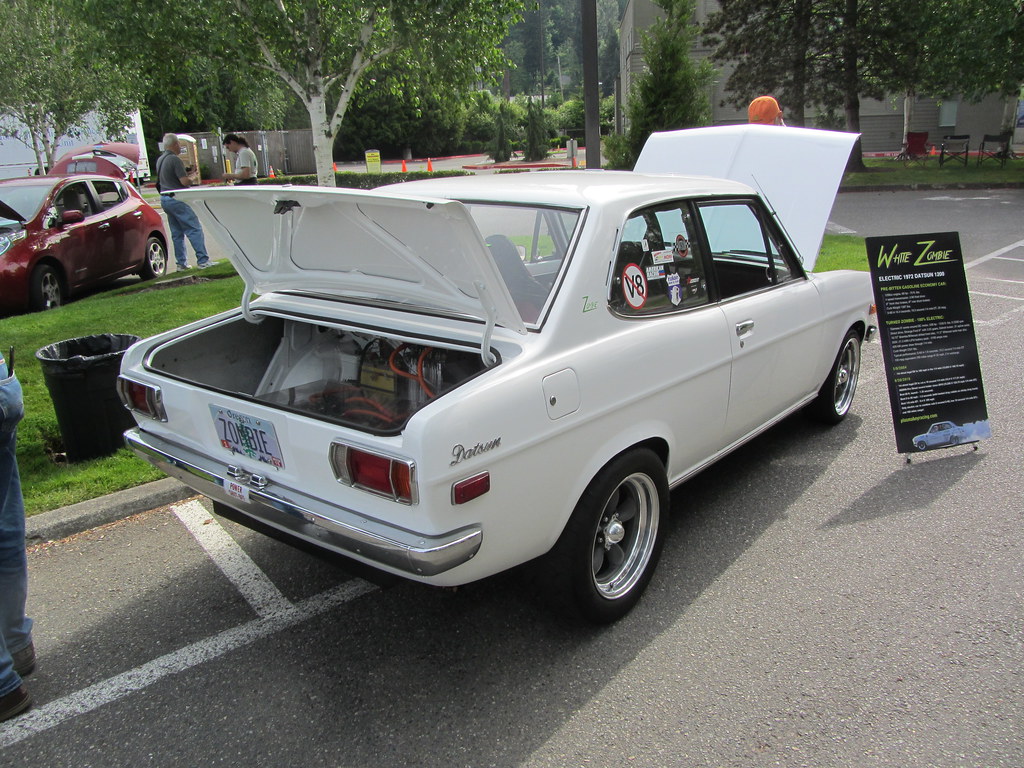
5. **Paul Newman’s Datsun Racing Cars**
Unlike many celebrity-vehicle associations born from flash and visibility, Paul Newman’s relationship with Datsun (later Nissan) competition cars represented something far more substantial: a genuine racing partnership that transformed both the actor’s life and the Japanese manufacturer’s American reputation through shared passion and competitive success. This wasn’t just for show; it was serious racing!
Newman’s racing journey began relatively late in life, proving it’s never too late to chase your passions. At age 47, while filming the 1969 racing movie “Winning,” he discovered a natural talent and all-consuming passion for motorsport. After training professionally, he turned to actual competition, initially campaigning various cars before forming a crucial partnership with Datsun in the mid-1970s. This was the start of something legendary on the track.
The relationship centered primarily around the Datsun 510 and 280Z models, which were modest Japanese sports cars far from the exotic machinery normally associated with celebrity racers. Newman’s first significant car was a Datsun 510 sedan prepared by Bob Sharp Racing. Despite its humble origins as a family car, the lightweight, rear-wheel-drive platform proved exceptionally competitive when properly modified. Newman campaigned these vehicles in SCCA (Sports Car Club of America) events, quickly establishing himself as a serious competitor rather than a mere celebrity dilettante. He earned his stripes!
As Newman’s skills developed, he graduated to the more powerful Datsun 280Z, winning multiple SCCA national championships. What made these victories particularly significant was their authenticity; Newman wasn’t given special treatment or advantages because of his fame. He earned his success through dedication, skill development, and thousands of hours behind the wheel, often competing against professional drivers with far more experience. That’s pure grit and talent right there!
The distinctive red, white, and blue BRE (Brock Racing Enterprises) and Bob Sharp Racing liveries of Newman’s Datsuns became iconic in American motorsport, appearing on magazine covers and in televised races. These appearances transformed Datsun’s image in the American market from an economy car manufacturer to a serious performance brand, helping pave the way for the later success of the 240Z and 280ZX models among enthusiasts. Newman’s relationship with these cars extended well beyond his racing career; in 1979, he co-founded Newman/Haas Racing, which became one of the most successful teams in American open-wheel racing. Throughout his racing involvement, he maintained connections to Nissan/Datsun, helping cement the brand’s performance credentials in the American market. Unlike many celebrity car associations based on fleeting ownership or cinematic moments, Newman’s connection to his Datsuns was built on thousands of racing laps, countless hours of preparation and practice, and genuine competitive accomplishments. His Datsuns weren’t props or status symbols – they were working tools of a craft he pursued with the same seriousness he brought to his acting career, creating an association based on substance rather than mere style.
Car Model Information: 2018 Chevrolet Corvette Grand Sport
Name: Datsun
Logo: Datsun logo.svg
LogoCaption: 2013 logo
Defunct: unbulleted list
Fate: Discontinued
AreaServed: unbulleted list
KeyPeople: unbulleted list
Industry: Automotive industry
Products: Automobiles,light trucks
Parent: Nissan
Foundation: unbulleted list
Location: Tokyo
Homepage: datsun.com
Categories: Articles containing Japanese-language text, Articles with short description, Car brands, Car manufacturers of Japan, Commons category link is on Wikidata
Summary: Datsun (UK: , US: ) was a Japanese automobile manufacturer brand owned by Nissan. Datsun’s original production run began in 1931. From 1958 to 1986, only vehicles exported by Nissan were identified as Datsun. Nissan phased out the Datsun brand in March 1986, but relaunched it in June 2013 as the brand for low-cost vehicles manufactured for emerging markets. Nissan considered phasing out the Datsun brand for a second time in 2019 and 2020, eventually discontinuing the struggling brand in April 2022.
In 1931, DAT Motorcar Co. chose to name its new small car “Datson”, a name which indicated the new car’s smaller size when compared to the DAT’s larger vehicle already in production. When Nissan took control of DAT in 1934, the name “Datson” was changed to “Datsun”, because “son” also means “loss” (損 son) in Japanese, and to honour the sun depicted in the national flag – thus the name Datsun: Dattosan (ダットサン, Dattosan). The Datsun name is internationally well known for the 510, Fairlady roadsters, and the Z and ZX coupés.
Get more information about: Datsun
Buying a high-performing used car >>>
Brand: Datsun Model: Racing Cars
Price: $59,896 Mileage: 26,662 mi.
Read more about: Paul Newman’s Hidden Drive: Unpacking the Hollywood Icon’s Illustrious Racing Career and Unbroken Records on the Track

6. **James Bond’s Aston Martin DB5**
No fictional character has influenced automotive desirability quite like James Bond, and no Bond car has achieved the legendary status of the silver Aston Martin DB5 that first appeared in 1964’s “Goldfinger.” This singular vehicle transformed Aston Martin from a struggling, low-volume British manufacturer into a global luxury icon and created the template for the modern movie car as a marketing phenomenon. It’s the ultimate spy accessory!
The DB5’s journey to screen immortality began when Bond film producers were seeking a replacement for the Bentley that Bond drove in Ian Fleming’s novels. Aston Martin was initially reluctant to provide vehicles for the film but eventually agreed to loan two cars – a decision that would ultimately save the company. Production designer Ken Adam and special effects expert John Stears then transformed the already beautiful grand tourer into a gadget-laden spy vehicle featuring machine guns, a bulletproof shield, an ejector seat, an oil slick dispenser, rotating license plates, and other ingenious modifications. Talk about a glow-up!
When “Goldfinger” premiered in September 1964, the DB5 became an overnight sensation. Sean Connery’s effortless cool behind the wheel created an association that would define automotive aspiration for generations. The car’s limited three-minute screen time in “Goldfinger” belies its massive cultural impact; the DB5 returned in “Thunderball,” and decades later in “GoldenEye,” “Tomorrow Never Dies,” “Casino Royale,” “Skyfall,” “Spectre,” and “No Time To Die,” cementing its status as Bond’s signature vehicle across multiple actors and eras. It just never gets old!
The real-world impact on Aston Martin was truly transformative. Before the film, the company was producing approximately 200 cars annually and struggling financially. After the film’s release, demand skyrocketed, with wealthy buyers around the world seeking their piece of Bond glamour. The DB5’s appearance literally saved Aston Martin from potential bankruptcy and established a brand identity that continues to this day. You can’t put a price on that kind of exposure!
The original “Goldfinger” cars have become some of the most valuable vehicles in existence. One of the two original movie cars sold at auction in 2019 for $6.4 million, making it among the most expensive movie props ever sold. Recognizing the enduring demand, Aston Martin recently produced 25 “Goldfinger Continuation” DB5s, complete with working gadgets (except the ejector seat!), priced at $3.5 million each – all of which sold immediately despite the astronomical price. Perhaps most remarkably, the Bond-DB5 association has survived for nearly 60 years, with the car appearing in Bond films as recently as 2021’s “No Time To Die.” Unlike most movie vehicles that fade into obscurity after their films leave theaters, the DB5 has achieved timelessness, remaining as desirable and recognizable today as it was in 1964 – a testament to the extraordinary cultural power created when the right car meets the right character on the silver screen. Shaken, not stirred, indeed!
Car Model Information: 2018 Chevrolet Corvette Grand Sport
Name: Aston Martin DB5
Manufacturer: Aston Martin
Production: 1963–1965 (1,059 units),2020 (25 units)
Assembly: Newport Pagnell,England
Designer: Carrozzeria Touring Superleggera
Class: Grand tourer
BodyStyle: coupé
Layout: Front-engine, rear-wheel-drive layout
Engine: DOHC,Straight-6,3995 cc
Order: flip
Abbr: on
Powerout: convert
Transmission: ZF Friedrichshafen
Length: 4570 mm
Width: 1680 mm
Wheelbase: 98.0 in
Predecessor: Aston Martin DB4
Successor: Aston Martin DB6
Doors: 2
Weight: 3311 lb
Sp: uk
Categories: All Wikipedia articles written in British English, Articles with short description, Aston Martin vehicles, CS1: unfit URL, Cars discontinued in 1965
Summary: The Aston Martin DB5 is a British grand tourer (GT) produced by Aston Martin and designed by Italian coachbuilder Carrozzeria Touring Superleggera. Originally produced from 1963 to 1965, the DB5 was an evolution of the final series of DB4. The “DB” designation is from the initials of David Brown who built up the company from 1947 onwards.
The DB5 is best-known for its role in the James Bond films. It was first driven by the fictional spy in the film Goldfinger (1964). In 2013, the car featured on a “British Auto Legends” postage stamp issued by the Royal Mail.
Get more information about: Aston Martin DB5
Buying a high-performing used car >>>
Brand: Aston Martin Model: DB5
Price: $59,896 Mileage: 26,662 mi.
Read more about: Rare ’60s Automobiles: Can You Name These Beasts Only a True Petrolhead Remembers? A Deep Dive into the Decade’s Most Unforgettable Machines!

7. **Janis Joplin’s Psychedelic Porsche 356**
In 1968, at the height of the counterculture movement, Janis Joplin commissioned a transformation that would turn her 1965 Porsche 356c Cabriolet from an already distinctive sports car into a rolling psychedelic masterpiece. This vehicle perfectly captured both her outsized personality and the cultural moment, becoming inseparable from her public image. Get ready to have your mind blown!
Joplin purchased the used Porsche in September 1968 for $3,500 – already an extravagant purchase for a newly successful musician. The car was originally Oyster White, an elegant but conventional color choice. Dissatisfied with this understated appearance, Joplin paid $500 to roadie Dave Richards to create a mural that would cover the entire vehicle. It was time for some serious artistic expression!
The resulting design, brilliantly titled “The History of the Universe,” featured a kaleidoscopic blend of butterflies, jellyfish, astrological symbols, and portraits of the Big Brother and the Holding Company band members. All of this was set against a cosmic background of deep blues, vibrant oranges, and yellows. The car became an explosion of color and creativity, a true moving canvas reflecting the vibrant spirit of the era.
Unlike John Lennon’s Rolls-Royce, which was often chauffeur-driven, Joplin’s Porsche was her daily transportation. She was frequently seen driving it around San Francisco and parking it outside the Winterland Ballroom and Fillmore West where she performed. The car became so associated with her presence that fans would leave notes under the wipers when they spotted it parked on the street. In a city already known for flamboyant expression, Joplin’s Porsche stood out as perhaps the most recognizable vehicle in San Francisco.
What made this particular car so significant was how perfectly it embodied Joplin’s artistic philosophy. Just as her music took traditional blues structures and reinvented them with raw emotional intensity, her Porsche took a traditional German sports car and reimagined it as a canvas for unfettered psychedelic expression. The vehicle represented the perfect marriage of European engineering precision and American countercultural abandon. It was raw, it was beautiful, and it was undeniably Janis.
After Joplin’s untimely death in October 1970, the car passed to her siblings. Weather and time gradually damaged the original paint job, leading her family to eventually restore the vehicle with a faithful recreation of Richards’ original artwork. For many years, it was proudly displayed at the Rock and Roll Hall of Fame in Cleveland before being sold at auction in 2015 for an incredible $1.76 million – a price nearly quadruple its pre-sale estimate and the highest ever paid for any Porsche 356 at the time. Today, replicas of Joplin’s Porsche appear at countless car shows and ’60s-themed events, demonstrating how thoroughly this single vehicle has entered the visual vocabulary of American pop culture. The car stands as a three-dimensional artifact of a moment when traditional boundaries in music, art, and society were being dramatically reimagined by a generation determined to express itself without constraint. What an incredible legacy!
We just took a wild ride through some legendary celebrity-car pairings that kicked off American cool. But hold onto your hats, because we’re not done yet! The star power on wheels keeps cruising, bringing us more mind-blowing automotive obsessions and collections that truly define what it means to be an icon on the road. Get ready for unbelievable garages, tragic legacies, and some serious horsepower!
Car Model Information: 1956 Porsche 356 A
Name: Porsche 356
Manufacturer: unbulleted list
Production: 1948–1965
Assembly: Gmünd, Carinthia
Successor: Porsche 911 (classic)
Caption: Porsche 356 C coupé
Class: Sports car
Related: unbulleted list
Layout: Rear-engine, rear-wheel-drive layout
BodyStyle: unbulleted list
Designer: Ferry Porsche,Erwin Komenda
Wheelbase: cvt
Length: cvt
Width: cvt
Height: cvt
Weight: cvt
Categories: 1950s cars, 1960s cars, 24 Hours of Le Mans race cars, All Wikipedia articles written in American English, All articles containing potentially dated statements
Summary: The Porsche 356 is a rear-engine sports car, and the first-ever production Porsche model.
The 356 is a lightweight and nimble-handling, rear-engine, rear-wheel drive, two-door available both in hardtop coupé and open configurations. Engineering innovations continued during the years of manufacture, contributing to its motorsports success and popularity. Production started in 1948 at Gmünd, Austria, where Porsche built approximately 50 cars. In 1950 the factory relocated to Zuffenhausen, Germany, and general production of the 356 continued until April 1965, well after the replacement model 911 made its September 1964 debut. Of the 76,000 originally produced, approximately half survive. The 356 was first produced by Austrian company Porsche Konstruktionen GesmbH (1948–1949), and then by German company Dr. Ing. h. c. F. Porsche GmbH (1950–1965). It was Porsche’s first production automobile. Earlier cars designed by the Austrian company include Cisitalia Grand Prix race car, the Volkswagen Beetle, and Auto Union Grand Prix cars.
The original price in 1948 for the 356 coupe was US$3,750 (equivalent to $49,100 in 2024) (official general USD inflation). The 356 cabriolet cost US$4,250 (equivalent to $55,600 in 2024).
Get more information about: Porsche 356
Buying a high-performing used car >>>
Brand: Porsche Model: 356
Price: $48,995 Mileage: 10,628 mi.
Read more about: Janis Joplin’s Final Notes: The Haunting Details Leading to Her Tragic Death at 27
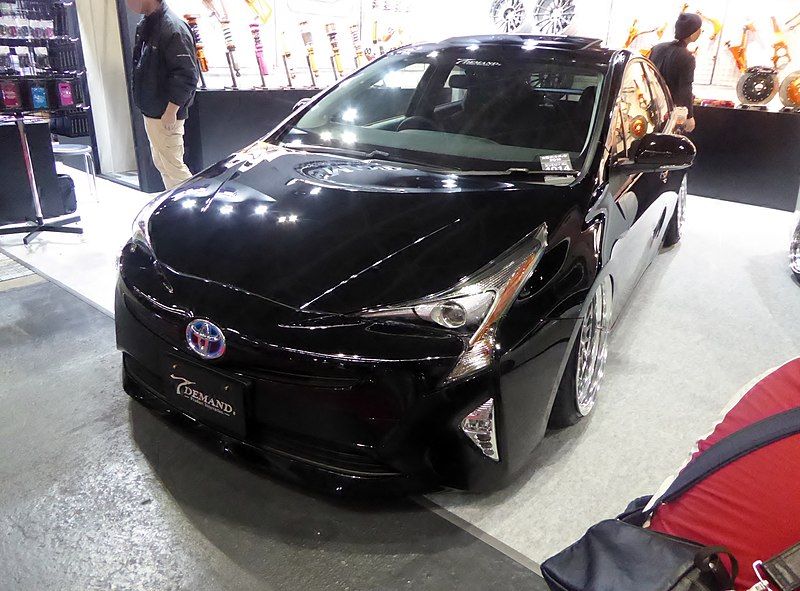
8. **Jay Leno’s Tank Car**
When we talk celebrity car collections, few vehicles drop jaws quite like Jay Leno’s Tank Car. This isn’t just a car; it’s a monstrous, custom-built machine fueled by a genuine 1,792-cubic-inch Chrysler M47 Patton tank engine! It transformed a comedian’s eccentric hobby into a landmark of automotive creativity, cementing Leno’s status as perhaps the world’s most serious celebrity car collector. Talk about an unforgettable ride!
The story of this beast kicks off in the early 1990s. Leno tasked car builders Randy Grubb and Mike Leeds with creating something absolutely unprecedented. Instead of a typical car platform, they started with a massive V-12 tank engine, so huge its pistons are roughly the size of coffee cans! Around this mechanical heart, they hand-crafted an aluminum body inspired by 1930s streamliners. The finished vehicle defies categories: 22 feet long, 9,500 pounds, 1,600 horsepower, and 3,000 lb-ft of torque. Fuel consumption? Gallons per mile!
What truly elevates the Tank Car from being just an expensive toy to a significant automotive cultural artifact is Leno’s passion for sharing it. Through his television appearances and his super popular “Jay Leno’s Garage” YouTube series, this vehicle became the ultimate embodiment of his automotive philosophy: cars are meant to be driven, not just admired. It expanded the public conception of what a “car” could be and solidified Leno’s image as a legitimate figure in automotive culture.
Car Model Information: 2018 Chevrolet Corvette Grand Sport
Name: FCA US, LLC
Logo: Stellantis.svg
LogoSize: 250px
TradingName: Stellantis North America
FormerNames: undefined
Type: Subsidiary
Industry: Automotive industry
Founded: [object Object]
Founder: Walter Chrysler
HqLocation: Chrysler World Headquarters and Technology Center
HqLocationCity: Auburn Hills, Michigan
HqLocationCountry: United States
NumLocations: List of Stellantis North America factories
AreaServed: North America
KeyPeople: Antonio Filosa
Predecessor: United States Motor Company,Maxwell Motor Company
NumEmployees: 81,341
NumEmployeesYear: 2023
Parent: Stellantis
Brands: Chrysler (brand),Dodge,Jeep,Mopar,Ram Trucks,Street and Racing Technology
Subsid: Stellantis Canada
Categories: 1925 establishments in Michigan, 1998 mergers and acquisitions, 2007 mergers and acquisitions, 2014 mergers and acquisitions, All articles containing potentially dated statements
Summary: FCA US, LLC, doing business as Stellantis North America and known historically as Chrysler ( KRY-slər), is one of the “Big Three” automobile manufacturers in the United States, headquartered in Auburn Hills, Michigan. It is the American subsidiary of the multinational automotive company Stellantis. Stellantis North America sells vehicles worldwide under the Chrysler, Dodge, Jeep, and Ram Trucks nameplates. It also includes Mopar, its automotive parts and accessories division, and SRT, its performance automobile division. The division also distributes Alfa Romeo, Fiat, and Maserati vehicles in North America.
The original Chrysler Corporation was founded in 1925 by Walter Chrysler from the remains of the Maxwell Motor Company. In 1998, it merged with Daimler-Benz, which renamed itself DaimlerChrysler but in 2007 sold off its Chrysler stake. The company operated as Chrysler LLC through 2009, then as Chrysler Group LLC. In 2014, it was acquired by Fiat S.p.A.; it subsequently operated as a subsidiary of the new Fiat Chrysler Automobiles (FCA), then as a subsidiary of Stellantis, the company formed from the 2021 merger of FCA and PSA Group (Peugeot Société Anonyme).
After founding the company, Walter Chrysler used the General Motors brand diversification and hierarchy strategy that he had become familiar with when he worked in the Buick division at General Motors. He then acquired Fargo Trucks and the Dodge Brothers Company, and created the Plymouth and DeSoto brands in 1928. Facing postwar declines in market share, productivity, and profitability, as GM and Ford were growing, Chrysler borrowed $250 million in 1954 from Prudential Insurance to pay for expansion and updated car designs.
Chrysler expanded into Europe by taking control of French, British, and Spanish auto companies in the 1960s; Chrysler Europe was sold in 1978 to PSA Peugeot Citroën for a nominal $1. The company struggled to adapt to changing markets, increased U.S. import competition, and safety and environmental regulation in the 1970s. It began an engineering partnership with Mitsubishi Motors, and began selling Mitsubishi vehicles branded as Dodge and Plymouth in North America. On the verge of bankruptcy in the late 1970s, it was saved by $1.5 billion in loan guarantees from the U.S. government. New CEO Lee Iacocca was credited with returning the company to profitability in the 1980s. In 1985, Diamond-Star Motors was created, further expanding the Chrysler-Mitsubishi relationship. In 1987, Chrysler acquired American Motors Corporation (AMC), which brought the profitable Jeep, as well as the newly formed Eagle, brands under the Chrysler umbrella. In 1998, Chrysler merged with German automaker Daimler-Benz to form DaimlerChrysler AG; the merger proved contentious with investors. As a result, Chrysler was sold to Cerberus Capital Management and renamed Chrysler LLC in 2007.
Like the other Big Three automobile manufacturers, Chrysler was impacted by the automotive industry crisis of 2008–2010. The company remained in business through a combination of negotiations with creditors, filing for Chapter 11 bankruptcy reorganization on April 30, 2009, and participating in a bailout from the U.S. government through the Troubled Asset Relief Program. On June 10, 2009, Chrysler emerged from the bankruptcy proceedings with the United Auto Workers pension fund, Fiat S.p.A., and the U.S. and Canadian governments as principal owners. The bankruptcy resulted in Chrysler defaulting on over $4 billion in debts. In May 2011, Chrysler finished repaying its obligations to the U.S. government five years early, although the cost to the American taxpayer was $1.3 billion.
Over the next few years, Fiat S.p.A. gradually acquired the other parties’ shares. In January 2014, Fiat acquired the rest of Chrysler from the United Auto Workers retiree health trust, making Chrysler Group a subsidiary of Fiat S.p.A. In May 2014, Fiat Chrysler Automobiles was established by merging Fiat S.p.A. into the company. Chrysler Group LLC remained a subsidiary until December 15, 2014, when it was renamed FCA US LLC, to reflect the Fiat-Chrysler merger.
As a result of the merger between FCA and PSA, on 17 January 2021 it became a subsidiary of the Stellantis Group.
Get more information about: Chrysler
Buying a high-performing used car >>>
Brand: Chrysler Model: Tank Car
Price: $59,896 Mileage: 26,662 mi.
Read more about: Timeless Machines, Modern Rules: Unpacking the Legality of Classic Cars Lacking Modern Safety Features
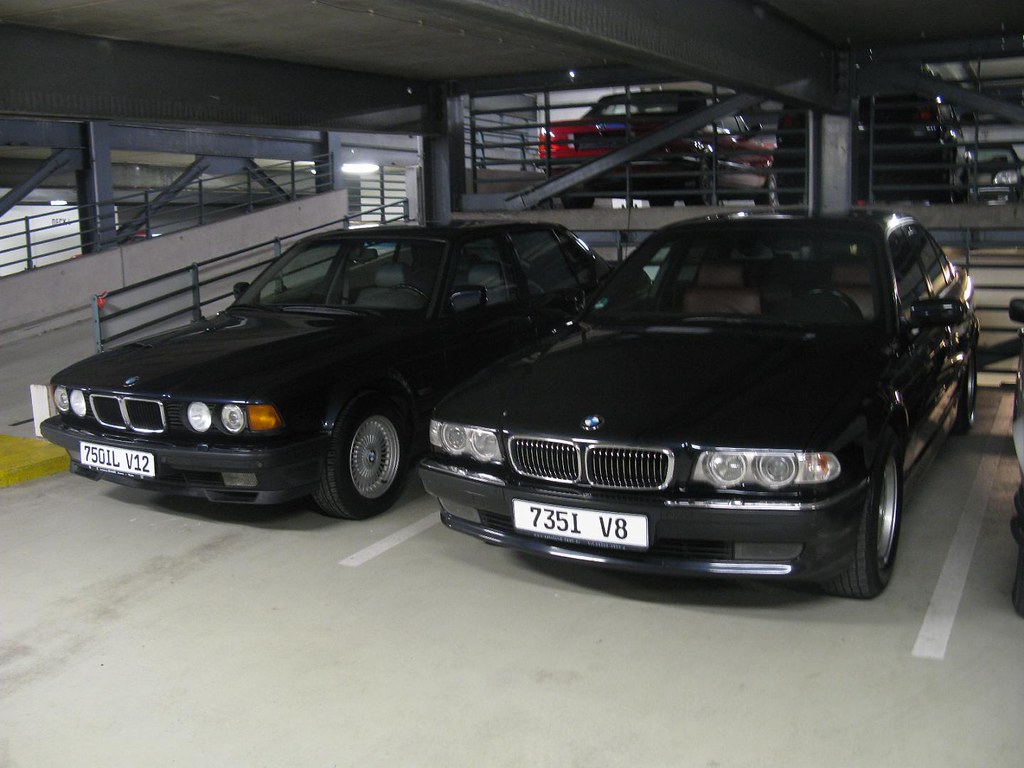
9. **Tupac Shakur’s BMW 750iL**
On a warm Las Vegas evening back in September 1996, a sleek black BMW 750iL tragically became forever etched in hip-hop history, not because of a wild music video, but as the site of Tupac Shakur’s fatal shooting. This heartbreaking event transformed an otherwise unremarkable luxury sedan into a somber cultural artifact, serving as a powerful symbol of hip-hop’s dangerous intersection with real-world violence during the tumultuous 1990s.
Shakur had leased this 1996 BMW 750iL through Death Row Records, choosing the flagship German luxury sedan just months before his untimely death. It was a top-of-the-line choice for an entertainer, boasting a robust 5.4-liter V12 engine and a plush leather interior. On that fateful night, after attending a boxing match, Tupac was riding in the passenger seat with Suge Knight when, at a red light, an unidentified shooter opened fire, riddling the BMW with multiple rounds.
Following the tragedy, the vehicle was impounded as evidence. Later, it was restored and sold to private collectors, even being offered for sale in 2018 for a staggering $1.5 million. This hefty price tag undeniably demonstrates the powerful, albeit macabre, collector value attached to its provenance. Photographs of the bullet-riddled BMW door panels became iconic images, cementing its place as a complex artifact in hip-hop history, representing success and the dangerous realities that lurked beneath the music’s powerful imagery.
Read more about: From Getaway Cars to Tragic Endings: Unpacking 12 of History’s Most Infamous Automotive Disasters

10. **Michael Jordan’s Ferrari 512 TR**
In the early 1990s, as Michael Jordan soared from basketball’s greatest player to the world’s most recognizable athlete, his choice of a striking red Ferrari 512 TR created a truly signature celebrity-car pairing. This magnificent machine became more than just a ride; it came to symbolize athletic excellence, unimaginable success, and the unprecedented marketability of sports superstars in the modern media age. It was a match made in sports luxury heaven!
Jordan snagged his Ferrari 512 TR during the Chicago Bulls’ legendary first championship three-peat era. He picked a model that perfectly aligned with his unstoppable athletic persona: a mid-engine Ferrari packing a flat-12 engine, unleashing 428 horsepower and rocketing from 0-60 mph in a blistering 4.8 seconds. With its aggressive, wedge-shaped Pininfarina design and rich competition heritage, the 512 TR was the ultimate expression of Italian automotive performance and undeniable style.
What made Jordan’s Ferrari particularly significant was its incredible visibility. Jordan regularly drove it to Bulls practices and games, creating iconic images of the superstar emerging from the low-slung red sports car, often rocking his Air Jordan sneakers. These arrivals, constantly captured by media, forged a powerful visual association between Jordan’s on-court excellence and his magnificent Italian supercar, helping reposition Ferrari in American pop culture and sparking a trend of athletes owning exotic supercars.
Car Model Information: 2018 Chevrolet Corvette Grand Sport
Name: Ferrari Testarossa, 512 TR and F512 M
Manufacturer: Ferrari
Production: 1984–1996,9,939 produced
Assembly: Maranello
Predecessor: Ferrari Berlinetta Boxer
Successor: Ferrari 550
Class: Sports car,Grand tourer
BodyStyle: berlinetta
Layout: Rear mid-engine, rear-wheel-drive layout
Engine: Ferrari flat-12 engine,Flat-12 engine
Transmission: Manual transmission
Designer: Leonardo Fioravanti (engineer)
Categories: 1990s cars, All articles with dead external links, All articles with unsourced statements, Articles containing Latin-language text, Articles with dead external links from February 2018
Summary: The Ferrari Testarossa (Type F110) is a 12-cylinder mid-engine sports car manufactured by Ferrari, which went into production in 1984 as the successor to the Ferrari Berlinetta Boxer. The Pininfarina-designed car was originally produced from 1984 until 1991, with two model revisions following the end of Testarossa production called the 512 TR and F512 M, which were produced from 1992 until 1996. Including revised variations, almost 10,000 cars in total were produced, making it at the time one of the most mass-produced Ferrari models.
The Testarossa is a two-door coupé that premiered at the 1984 Paris Auto Show. All versions of the Testarossa were available with a rear-mounted, five-speed manual transmission. The rear mid-engine design (engine between the axles but behind the cabin) keeps the centre of gravity in the middle of the car, which increases stability and improves the car’s cornering ability, and thus results in a standing weight distribution of 40% front: 60% rear.
The original Testarossa was re-engineered for the 1992 model year and was introduced as the 512 TR (TR meaning TestaRossa), at the Los Angeles Auto Show, effectively as a completely new car, and an improved weight distribution of 41% front, 59% rear. Another new variant called the F512 M was introduced at the 1994 Paris Auto Show. The car dropped the TR initials and added the M which in Italian stood for modificata, or translated to modified, and was the final version of the Testarossa, which continued its predecessor’s weight distribution improvement of 42% front, 58% rear. The F512 M was Ferrari’s last vehicle that featured the flat-12 engine.
The Testarossa is a recognized cultural icon of the 1980s, and was popularized by media including the 1984 television series Miami Vice (from the 1986 season onward) and Sega’s 1986 video game Out Run.
Get more information about: Ferrari Testarossa
Buying a high-performing used car >>>
Brand: Ferrari Model: 512 TR
Price: $59,896 Mileage: 26,662 mi.
Read more about: Beyond the Red Carpet: Dissecting the Iconic Cars Celebrities Drive and the PR Machine Behind Their Public Persona
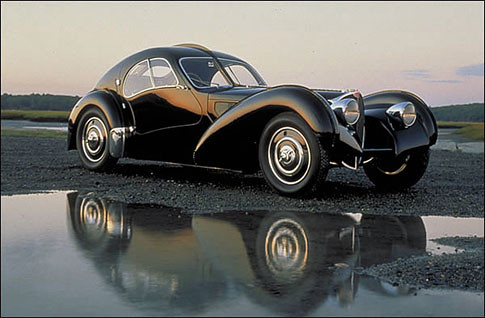
11. **Ralph Lauren’s Timeless Collection**
While Ralph Lauren is famously known for his signature clothing lines that grace wardrobes worldwide, this visionary designer also boasts a rather *well-tailored* collection of high-end vehicles. Forget mere transportation; Lauren famously views each car in his possession as a legitimate piece of art. Once you glimpse his garage, you’d be hard-pressed to disagree! It’s a masterclass in automotive aesthetics, truly.
His collection isn’t just about speed; it’s about unparalleled beauty and historical significance. We’re talking about automotive legends like the stunning Jaguar XK 120, the incredibly rare Alfa Romeo 8C 2300 Monza, and the equally magnificent Alfa Romeo 8C 2900 Mille Miglia. And that’s just scratching the surface! His garage also houses iconic beauties such as a Ferrari 250 LM and a Mercedes-Benz 300SL, alongside a myriad of other breathtaking, trendsetting showpieces.
Ralph Lauren isn’t just collecting; he’s curating history. By meticulously preserving such amazing cars, he’s doing our future a huge favor, ensuring that these masterpieces remain alive today and for generations to come. His collection is a powerful testament to how a true connoisseur integrates their passion for design and aesthetics across all facets of their life, from fashion to four wheels.
Read more about: From Hollywood to Hot Rods: 13 Celebrities Who Quietly Collect Classic American 1950s Convertibles
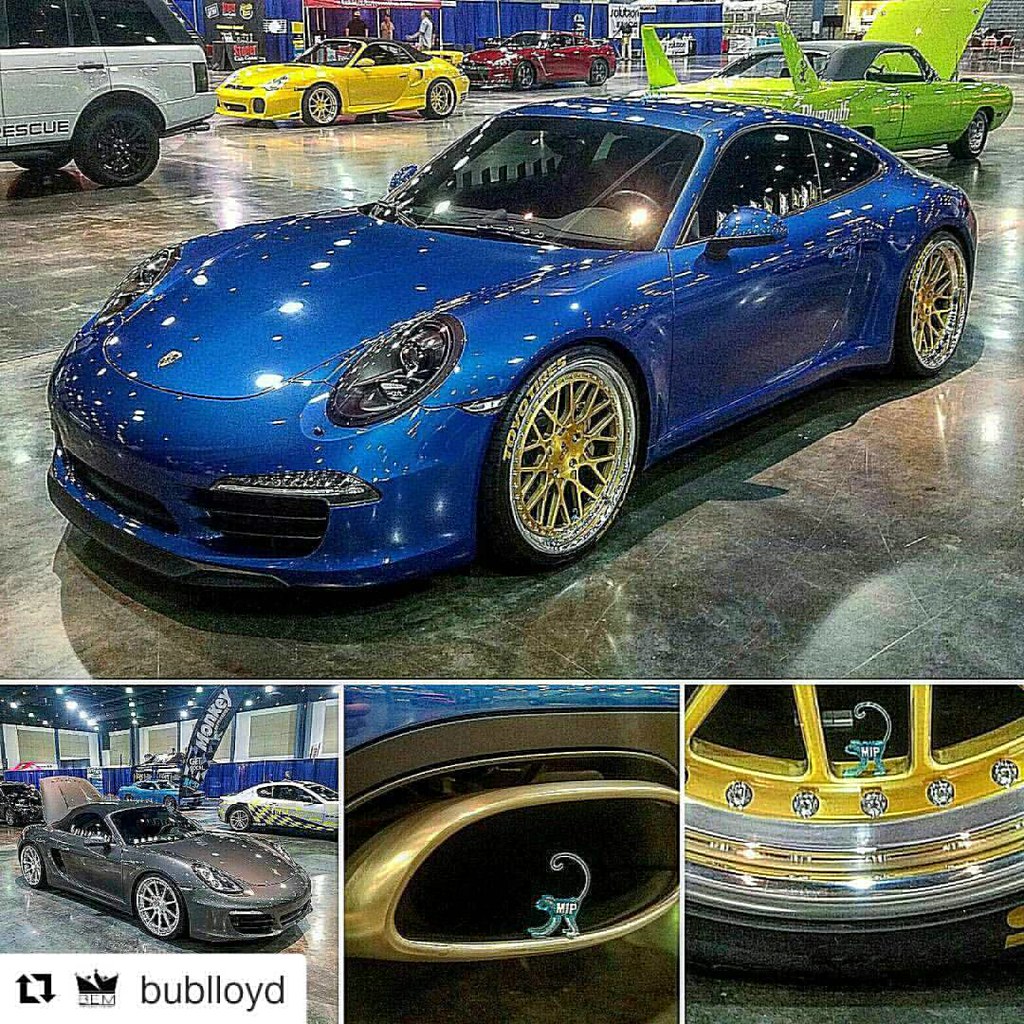
12. **Jerry Seinfeld’s Porsche Paradise**
Who knew one of the funniest comedians and actors of our time also collects some of the absolute best cars of his time? That’s right, Jerry Seinfeld, the king of observational humor, has a particular taste that leans *heavily* towards Porsche. It’s not just a hobby; it’s an obsession driven by his infinite love for the distinctive body styling that defines German engineering.
Every curve and every scope present on these road monsters simply captivates him. His dedication is so profound that it’s been made known that the sheer number of Porsche vehicles he owns is only rivaled by that of the actual Porsche museum itself! Now that’s what we call brand loyalty, with a luxurious twist.
Among his incredibly fast fleet, Jerry boasts some of the most sought-after and prestigious Porsches imaginable. We’re talking about gems like the legendary Porsche 959, the iconic Porsche 964, a vintage 1944 Porsche 550 Spyder, and a powerful Porsche Carrera GT. His entire collection, valued at a cool $15 million dollars, proves that his passion for these German beauties is as serious as it is extensive.
Read more about: The Ultimate Flex: Exploring the World’s Most Expensive Celebrity Car Collections

13. **Tim Allen’s Childhood Dream Garage**
Get ready to smile, because funnyman and former-sitcom star Tim Allen has perhaps the most relatable and heartwarming car collecting philosophy out there. He’s openly shared in interviews that he has purchased *every single car* he ever had a toy model of as a child! How cool is that for living out your dreams?
Allen, with his characteristic wit, readily admits that he has way more cars than he actually needs. But that doesn’t stop him from joyfully sharing his love for these four-wheeled works of art. His passion shines through in interviews, where he often talks about the unique stories and mechanical wonders behind his rides. His personal collection is a diverse treasure trove, featuring a magnificent variety of custom-built classics that span across many decades.
It’s truly inspiring to see a celebrity embrace their inner child with such enthusiasm and dedication. Tim Allen’s garage isn’t just a collection of vehicles; it’s a living, breathing testament to childhood dreams come true. Each car represents a piece of automotive history and a personal connection, reminding us all that the coolest collections are built from pure, unadulterated passion, echoing cherished memories.
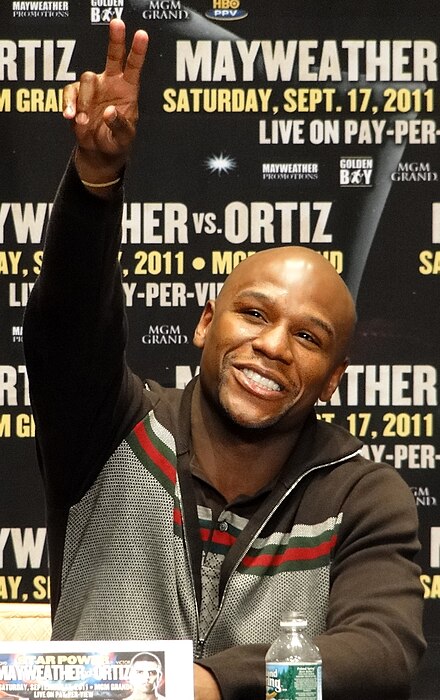
14. **Floyd Mayweather’s “Money” Machines**
When your nickname is “Money,” you better believe your car collection is going to be something spectacular, and Floyd Mayweather Jr. definitely delivers! This flamboyant boxing legend is practically made of cash, with Forbes reporting colossal earnings from his fights. What does he love to do with all that dough? Show it off, of course, through an incredible fleet of vehicles!
While the total value of Mayweather’s exotic car collection clocks in at roughly $5.94 million, it’s all relative. For a guy with an estimated net worth of more than $280 million, this is, as they say, “a drop in the bucket.” We’re talking about the same individual who reportedly keeps $123 million in a *single bank account*! That’s next-level wealth right there.
Say what you will about his ring persona, but Floyd Mayweather Jr. undeniably enjoys having nice things around, especially his rides. His fleet includes multiple copies of expensive cars, not just one of each, and even private planes! Driving a different Bugatti on any given day might seem like crazy levels of decadent to us mere mortals, but it’s a true flex on wheels, embodying his “Money” persona perfectly.
Read more about: Beyond the Ring: A Deep Dive into Floyd Mayweather’s Multi-Million Dollar Hypercar and Luxury Vehicle Collection

15. **Charlie Sheen’s Smooth S-Class**
Charlie Sheen, a name synonymous with a wild lifestyle and unforgettable Hollywood fame, absolutely knows how to enjoy the finer things in life. And when it comes to his daily drive, he chooses nothing less than the epitome of automotive luxury: his Mercedes-Benz S-Class. It’s a choice that perfectly blends executive sophistication with a touch of celebrity flair!
This luxury sedan is renowned globally for its incredibly smooth ride, packed-to-the-brim high-tech features, and a range of powerful engine options. With its inherently elegant design and a plush, comfortable interior that feels more like a private jet cabin, the S-Class perfectly matches Sheen’s larger-than-life personality. It’s a car that doesn’t just get you from A to B; it announces your arrival with understated power.
The Mercedes-Benz S-Class has long been a favorite among the elite, offering a sanctuary of calm and control amidst the hustle and bustle of celebrity life. For Sheen, it represents a blend of classic luxury and modern convenience, a vehicle that commands respect without screaming for attention – well, as much as a celebrity car can *not* scream for attention, anyway! It’s the ultimate statement of having made it, proving that even a “rock star from Mars” appreciates German engineering excellence.
**The Grand Finale: More Than Just Metal and Motors**
Wow, what an incredible journey we’ve taken through the garages and legendary drives of some of America’s coolest celebrities! From James Dean’s tragic “Little Bastard” to Jay Leno’s mind-bending Tank Car, and Michael Jordan’s iconic Ferrari, it’s clear these aren’t just vehicles; they’re extensions of personality, reflections of success, rebellion, and powerful cultural moments. Whether it’s Ralph Lauren’s artistry or Jerry Seinfeld’s dedication, these stars show us a car can be so much more than transportation. These celebrity-automotive pairings transform market demand, collector values, and public perception, imbuing metal, rubber, and glass with cultural significance that endures. So, buckle up, gearheads, and keep those engines roaring – because the story of celebrities and their incredible rides is one that never truly ends!


